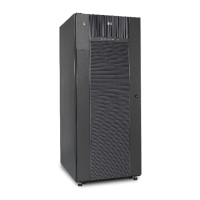Verifying the device files and drivers
The device files for new devices are usually created automatically during HP-UX
startup. Eac h dev ice must have a block-type device file in the /dev/dsk directory and
acharacter-typedevicefile in the /dev/rdsk directory.
However, some
HP-compatible systems do not create the device files automatically.
If verification shows that the device files were not created, follow the instructions in
Creating the device files to create the device files manually.
This procedure verifies both types of device files.
To verify tha
tthedevicefilesforthediskarraydeviceswerecreated:
1. Display the block-type device fi les in the /dev/dsk director y using the ls –l
command with the output piped to more. Verify there is one block-type device
file for each disk a rray device.
Example
# ls –l /dev/dsk | more
Total 0
brw-r-----1binsys280x006000 Dec 6 15:08 c6t0d0
brw-r-----1binsys2800x06100 Dec 6 15:08 c6t0d1
2. Verify tha
t the block-type device file name for each device is correct.
3. Display the character-type device files in the /dev/rdsk directory using the ls –l
command with the o utput piped to more. Verify that there is one character-type
device file for each disk array device.
Example
# ls –l /dev/rdsk | more
Total 0
crw-r
-----1binsys1770x006000 Dec 6 15:08 c6t0d0
crw-r-----1binsys1770x006100 Dec 6 15:08 c6t0d1
4. Use the d
evice data table you created to verify that the character-type d evice file
name for each device is correct.
This task can also be a ccom p lished with the lssf command.
5. After v
erifying the block-type and character-type device files, verify the HP-UX driver
for the
disk array using the ioscan –fn command.
Disk Array XP operating system configuration guide: HP-UX
27

